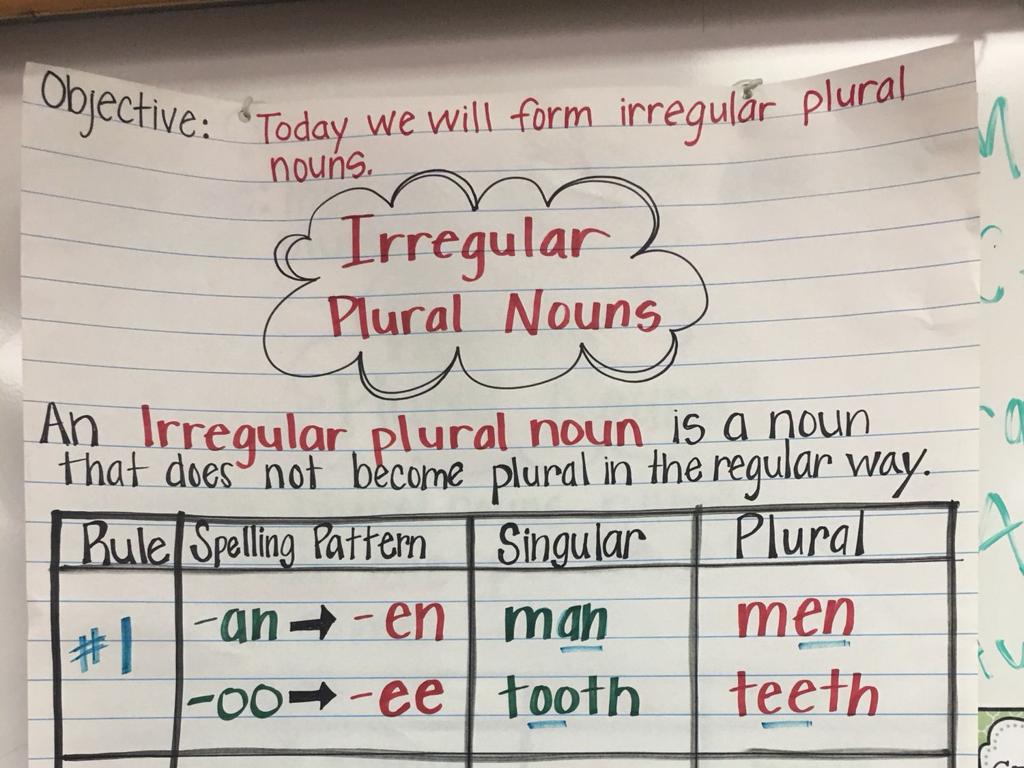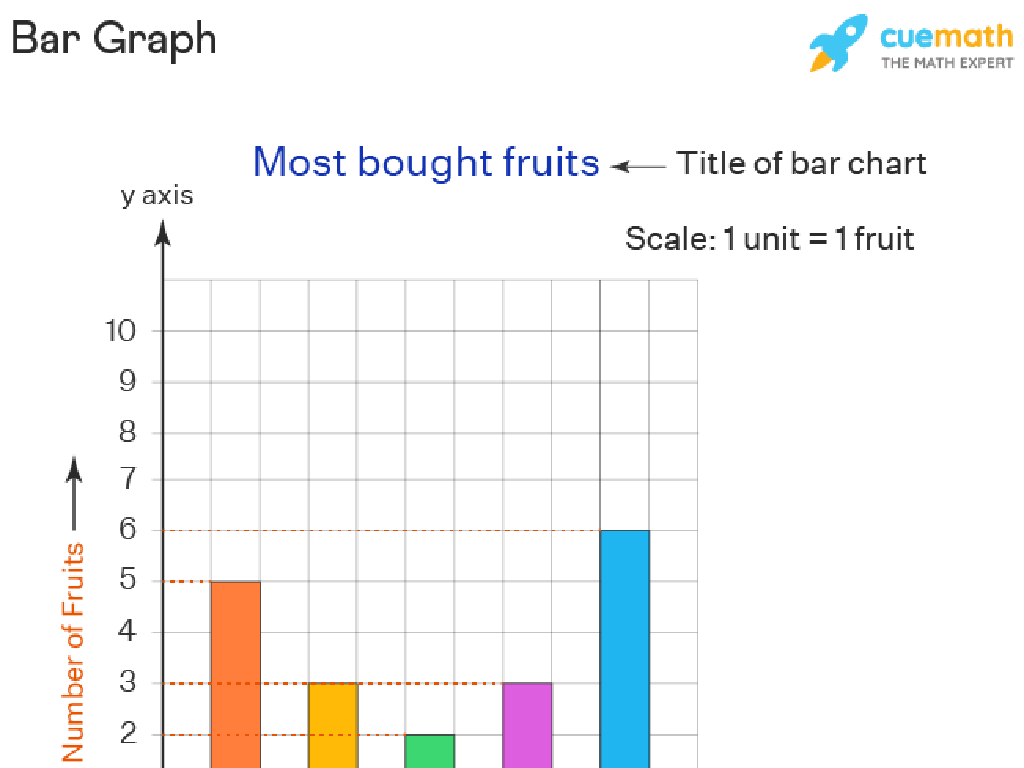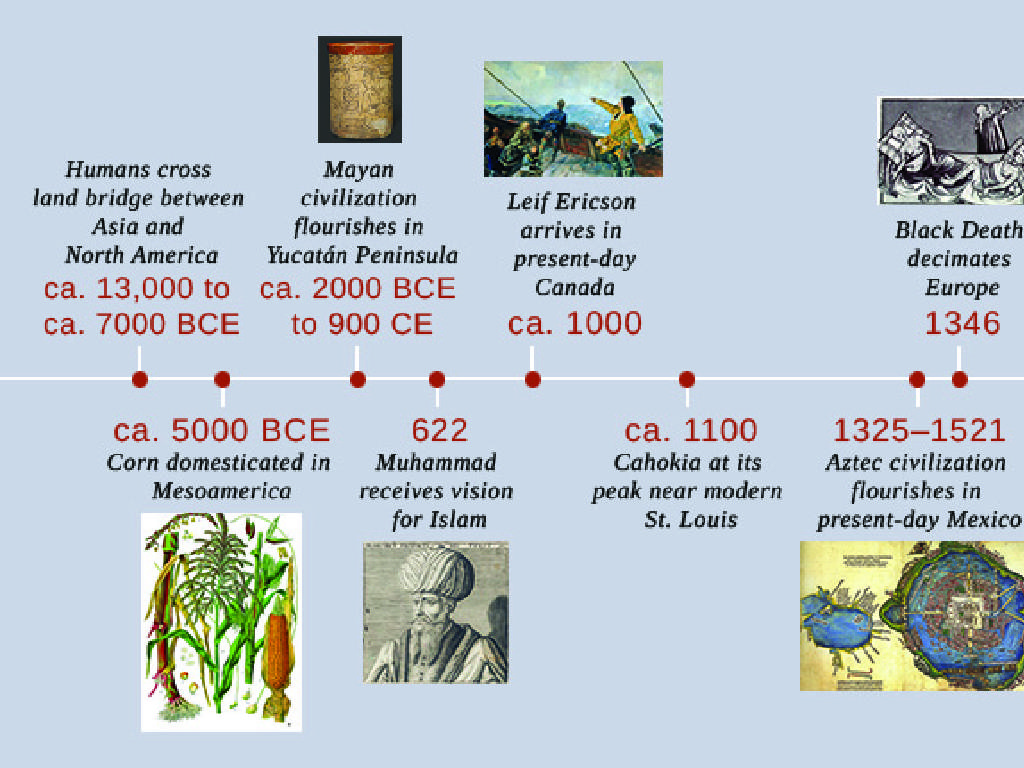Divide Whole Numbers And Fractions Using Models
Subject: Math
Grade: Sixth grade
Topic: Divide Fractions
Please LOG IN to download the presentation. Access is available to registered users only.
View More Content
Dividing Whole Numbers and Fractions
– Recap: What are fractions?
– Fractions represent parts of a whole
– Understanding division
– Division is splitting into equal parts
– Today’s goal: Division with fractions
– Learn to divide numbers by fractions and vice versa
– Dividing whole numbers by fractions
– Use models to visualize dividing a number by a fraction
|
Begin with a brief review of fractions to ensure students recall that fractions represent parts of a whole. Clarify the concept of division as the process of splitting something into equal parts or groups. Today’s objective is to understand how to divide whole numbers by fractions and fractions by whole numbers using visual models. Emphasize the importance of visual models in grasping the concept of division with fractions, as it can be abstract. Provide examples using pie charts or number lines to demonstrate how a whole can be divided by a fraction, and ensure to explain the concept of reciprocal when dividing by a fraction. Encourage students to think of real-life scenarios where they might need to divide by fractions.
Visualizing Division with Models
– Use pie models for division
– Pie models represent parts of a whole, like pizza slices
– Divide whole numbers by fractions
– Imagine cutting a pie based on fraction pieces
– Example: 1 ÷ 1/2
– How many 1/2 pieces can fit into 1 whole pie?
– Understanding division visually
|
This slide introduces students to the concept of dividing whole numbers by fractions using visual models, specifically pie charts. Pie models are an excellent way to illustrate how division works because they show the whole being divided into equal parts. For example, if we have 1 whole pie and we want to divide it by 1/2, we can visualize cutting the pie into two equal slices. Students will see that two halves make a whole, so 1 ÷ 1/2 equals 2. Encourage students to draw their own pie models and practice with different fractions to solidify their understanding of the concept.
Dividing Whole Numbers by Fractions
– Concept of halves in a whole
– How many 1/2 pieces fit into 1 whole?
– Interactive example: 3 ÷ 1/2
– Visualize dividing 3 cakes into half pieces
– Inverse of multiplication
– Division undoes what multiplication does
– Division as multiplied by reciprocal
– Instead of dividing, multiply by the opposite fraction
|
This slide introduces the concept of dividing whole numbers by fractions. Start by asking students how many halves make a whole to establish a foundational understanding. Move on to an interactive example where students visualize dividing 3 whole items, such as cakes, into halves. This will help them grasp the concept that dividing by a fraction is the same as finding out how many of those fractional parts fit into the whole number. Explain the inverse relationship between multiplication and division, highlighting that division can be thought of as multiplying by the reciprocal of the divisor. Provide additional examples and encourage students to use models like number lines or pie charts to visualize the division process. This will solidify their understanding and prepare them for more complex problems.
Dividing Fractions by Whole Numbers
– Understanding division of fractions
– What does it mean to divide a fraction by a whole number?
– Example: Dividing 1/2 by 2
– Let’s divide 1/2 by 2 and see what we get
– Simplify division using multiplication
– Learn how multiplication can make division easier
– Practice with different fractions
|
When we divide fractions by whole numbers, we are essentially determining how many of these whole numbers fit into our fraction. For example, dividing 1/2 by 2 asks how many times does 2 fit into 1/2. To simplify this process, we can use the concept of multiplication: dividing by a whole number is the same as multiplying by its reciprocal. So, 1/2 divided by 2 is the same as 1/2 multiplied by 1/2, which equals 1/4. This slide will introduce the concept and walk through an example with the class. Encourage students to think of division as ‘how many groups’ and multiplication as ‘how many in one group’ to help them understand the relationship between the two operations. Provide additional practice problems for students to apply this method with different fractions and whole numbers.
Let’s Practice Dividing Fractions!
– Apply division skills with examples
– Solve problems as a class
– We’ll tackle a few problems together on the board
– Discuss methods with classmates
– Share your thinking: How did you solve it?
– Collaborate on problem-solving
– Work in pairs to find solutions and explain your reasoning
|
This slide is designed to reinforce the students’ understanding of dividing whole numbers and fractions through active participation. Start with a couple of example problems, solving them step-by-step with the class. Encourage students to volunteer to solve problems on the board, fostering a collaborative learning environment. Facilitate peer discussions where students can explain their methods to each other, promoting deeper understanding. Pair students up for collaborative problem-solving, allowing them to teach each other and solidify their grasp of the concept. Possible activities include: creating fraction models with paper, using fraction circles, drawing number lines, or even using objects like blocks to represent fractions and whole numbers.
Class Activity: Fraction Division Art
– Create fraction division artwork
– Use models for division
– Draw pies or bars to represent fractions
– Present and explain your art
– Share your art with the class, explaining the division process
– Understand division visually
– Visual models help grasp abstract concepts
|
This activity is designed to help students understand the concept of dividing whole numbers by fractions through a creative and engaging art project. Students will create their own artwork representing fraction division using visual models such as pie charts or bar models. They will then present their artwork to the class, explaining the division process represented in their model. This will not only reinforce their understanding of the concept but also enhance their ability to explain mathematical processes. Possible activities include dividing a whole pizza into fractional pieces, showing how many half-cup servings are in a whole cup, or how many quarter hours are in an hour. Encourage creativity and ensure that each student has a clear understanding of the division process.
Wrapping Up: Division of Fractions
– Recap of fraction division
– Reviewed how to divide whole numbers by fractions using models.
– Homework: Practice problems
– Complete the worksheet with 10 problems on dividing fractions.
– Ask questions if unsure
– Review and prepare for next class
– Go over today’s lesson and try additional problems.
|
As we conclude today’s lesson on dividing whole numbers and fractions using models, it’s important to summarize the key points. Ensure students understand the concept of dividing by a fraction by multiplying by its reciprocal. Assign a homework worksheet with a variety of problems to reinforce today’s learning. Encourage students to ask questions if they’re unclear about any part of the lesson. Remind them to review their notes and practice further problems to prepare for the next class. This will help solidify their understanding and build confidence in dividing fractions.





